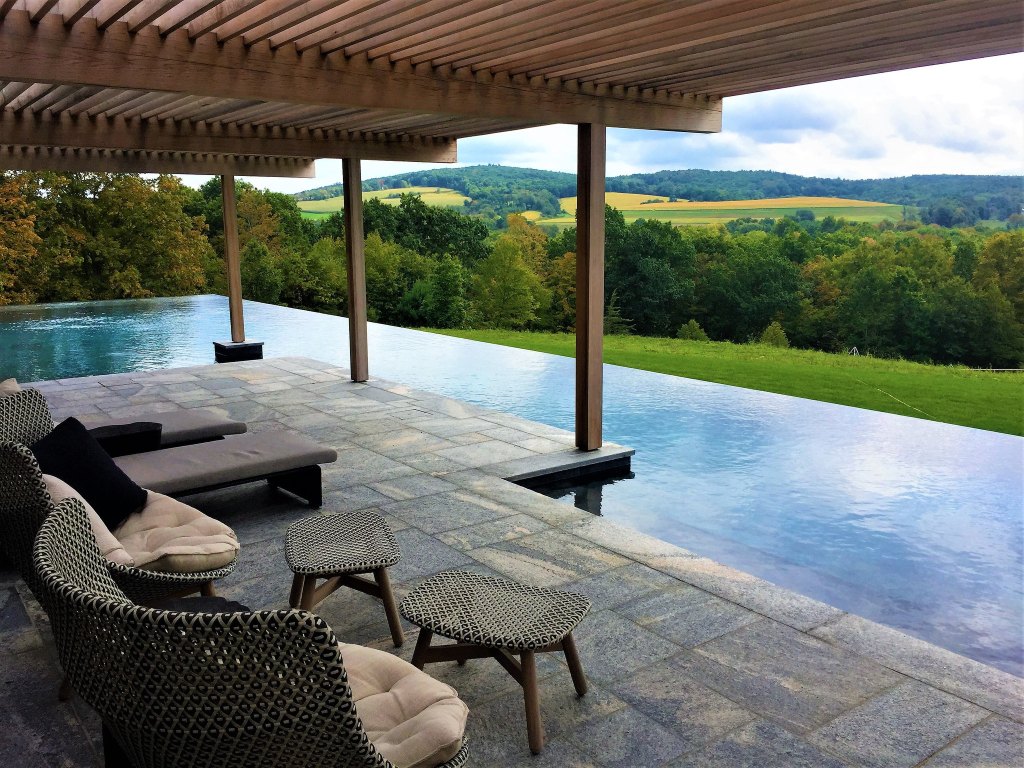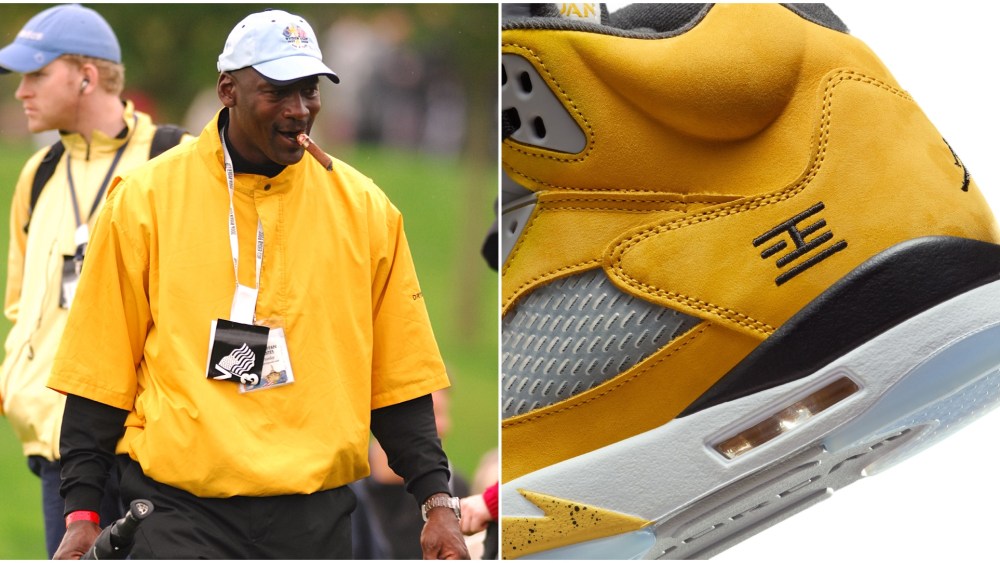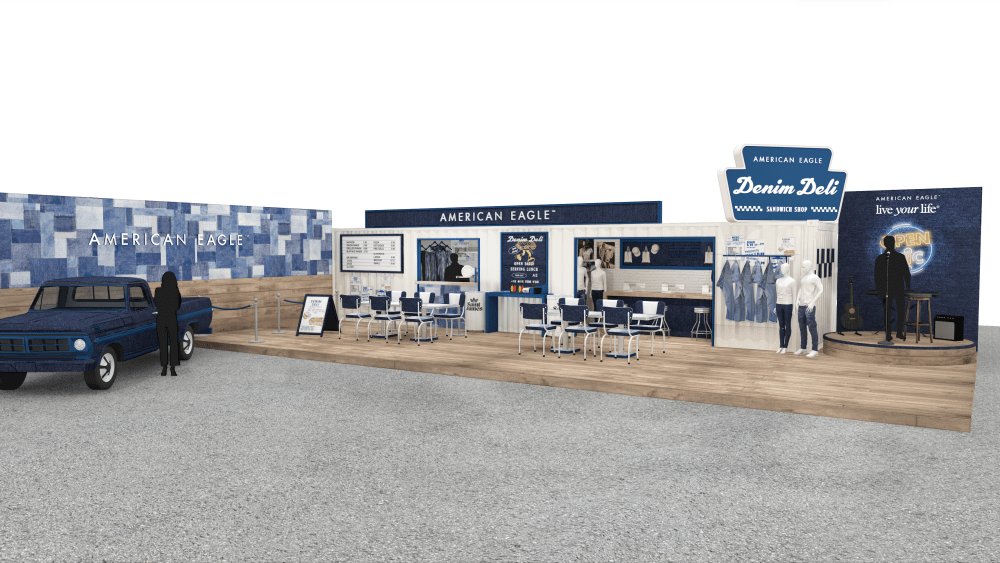On the grounds of a historic property in Litchfield County, Connecticut, a simple stone and cement pool filled with crystalline water uneventfully just turned 86 years old.
Scott Pools of Woodbury, Connecticut, built the timeless summer respite back in 1937 and in the nearly nine decades since, the company has installed several thousand others across the Northeast. Their enduring work has attracted an Oscar-heavy client list through the years, said to include Elia Kazan, Kathryn Bigelow, Daniel Day-Lewis, and the Clintons, along with institutions like the Hotchkiss School and Hay Harbor Club. (The company will neither confirm nor deny names to preserve privacy.)
Owner Jim Scott is just six months shy of his own 86th birthday. Only the second steward of what may be the oldest pool company operating on the East Coast, he has spent a lifetime thinking about pools.
In a conversation with WWD Weekend, Scott reflects on current natatorium trends and some of his more unusual requests through the years, including an elaborate Long Island grotto built for literal swims with the fishes.
WWD: How did your family get into the pool business?
Jim Scott: In 1937, the year before I was born, my father sat down with a bag of cement on his lap, read the directions, and built his first stone and concrete swimming pool — a vanishing-edge, natural pool that still operates today, in Woodbury, Connecticut. At that time there were very, very, very few private pools in existence.
WWD: What’s the secret to a lasting pool?
J.S.: Properly train the people who care for them. We do that with all of the maintenance teams who take on the care of our pools.
WWD: What would you say is your biggest contribution to the industry?
J.S.: Let me put it a different way. We have always been involved with the Connecticut Board of Health, helping them raise their safety standards. We were easily the first company on the East Coast to work with gunite [a type of pool created with flexible rebar and sprayed — as opposed to poured — concrete]. We’ve done that since 1950. We’ve built stainless steel pools on high floors of tall buildings. Everything we’ve ever constructed has been engineered to the highest standards.

WWD: Did you ever consider going into a different line of work?
J.S.: When I was discharged from the Navy as a young man, I applied to the University of Colorado architecture and engineering school. My father, who at that time was suffering from poor health, convinced me I could do more with my life by taking over the company business. We were building then, not only swimming pools but also shopping centers and houses. So I had the opportunity to work with a range of architectural styles. I came to the company at the age of 21. My father sold it to me, as the old European families often do.
WWD: How has pool construction changed since your earliest days?
J.S.: Water purification and filtration have improved immensely. The standards everyone in the pool business must meet have grown more stringent. There are now licensing requirements and continuing education. All of this makes for greater safety and a better product.
WWD: Do you build more saltwater pools or traditional chlorine these days?
J.S.: Saltwater pools still generate chlorine. People don’t always know that. The salt sits in the water and as it breaks down, a gas chlorine enters the pool. Then it converts back to salt. So you’re really in a very lightly salted pool, about the same amount that’s on your lettuce salad. You could hardly taste it.
But the pool must be precisely built to accept the salt. If not, this process will shorten the structure’s lifespan considerably.
WWD: Is saltwater chlorine any healthier than traditional chlorine?
J.S.: Salt provides a constant level of bactericide whereas standard chlorine is applied intermittently. Both tools are clean and safe, but there is more labor with a standard chlorine pool. Somebody’s got to hand-feed the chlorine and maintain the equipment. With saltwater, it’s an automatic process.
WWD; Which is better, gunite or poured concrete?
J.S.: In the Northeast, a cold climate, the strongest pool is one in the ground, properly engineered for its setting. That could be gunite, which handles curves and elevation changes well, or poured concrete, which is stronger at larger sizes. Both are very good options. Municipalities and schools tend to go for poured concrete. Everyone wants gunite for their backyard.
WWD: I heard you built a pool for Daniel Day-Lewis. Is that true?
J.S.: Did I? I don’t recall.
WWD: Well, who are some of your more interesting clients?
J.S.: Oh, they are all interesting to different people. So I would say, it would almost be an insult if I were to name one, because I’m sure I’ll forget to say somebody else who’s just as important.
We also, and this is at the core of what we do, we protect our clients’ privacy. We tend to deal with very private people.
There are a few things we consider sacred, including security. Most of our employees are veterans of the armed services who have been with us for many, many years. We don’t bring in day laborers.
Our reputation is important. All of our business comes through word of mouth.
WWD: What’s the furthest you’ll travel to build a pool?
J.S.: We work primarily in the Northeast. Connecticut, Massachusetts, New York, a little bit of New Jersey, Rhode Island. So that’s five states. And we do a lot of work in the Caribbean. But when the job is that far, we collaborate with local construction crews.
WWD: You must have visited some pretty idyllic settings.
J.S.: Working on the Hudson River is pretty dynamic. I like going up into the Berkshire Mountains. When you look across the valleys into the next mountain, that’s a nice spot for a vanishing edge.
WWD: What are some of the most outrageous pool requests you’ve ever received?
J.S.: Well, we have built pools into quarries, some of them fed by natural water, some of them artificially filled. We have built pools that are capable of having live fish in them. That particular project was on Long Island.

WWD: A Long Island homeowner wanted to swim with the fishes?!
J.S.: Yes. We hauled in rocks and made stalactites and stalagmites and caves. Probably the most difficult part of that job was purifying the water without killing the fish. We used ozone purification and did our research by visiting the Mystic Aquarium.
WWD: Has there ever been a request you couldn’t build?
J.S.: When people ask to build pools attached to existing stone ledges. Rock is porous. So it’s virtually impossible for a pool to hold water in that scenario. You have to start with concrete.
WWD: What are clients asking you for right now?
J.S.: The trend on the East Coast is back to traditional pools. We’re building a lot of English garden-type swimming pools. Those are built for viewing as much as swimming.
WWD: You mean people build pools just to look at them?
J.S.: Sometimes!
Our philosophy is, you should be able to walk up to a pool that’s been in the ground for 20 years or more, and it should look like it was just made. And the reverse is also true — the pool should look like it’s been there a lifetime, even on the day it’s built.
We are seeing a lot of European stonework surrounding our pools. I’m working on a project on the Hudson River right now that has replicated stonework from England, all made by master craftsmen.
A few clients are interested more in the health aspects of swimming so they ask for endless pools where you can swim against a current.
WWD: You’re about to turn 86 and still working.
J.S.: Every day. I’ve been doing this since I was a kid.
WWD: To what do you attribute your longevity?
J.S.: My joy of doing it.
WWD: Do you like to swim?
J.S.: I’m not an Olympian, if that’s what you’re asking.
WWD: But did you build yourself a pool in your own backyard?
J.S.: Yes. I did.
WWD: And do you just look at it or do you use it?
J.S.: If it gets hot enough, I’m in there — along with my family. But I’m not a real swimmer. I’m just a normal country boy.
You can print that.



